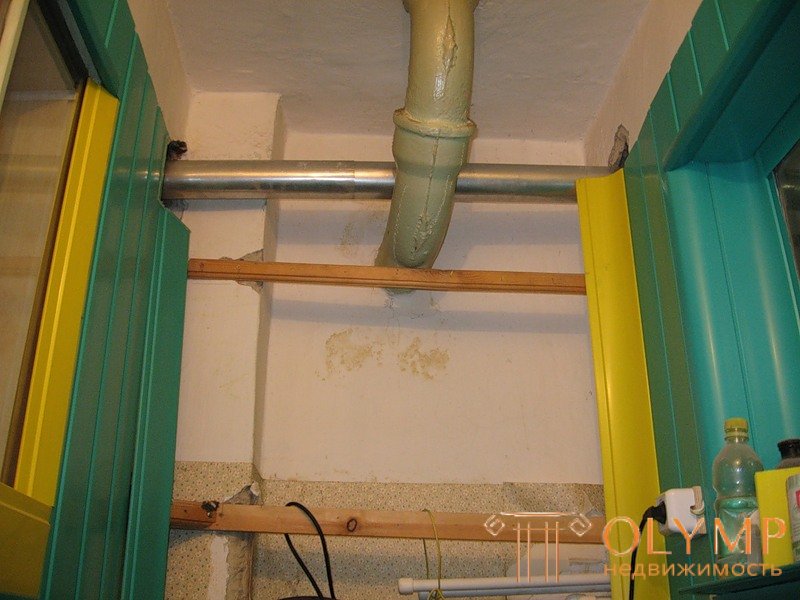
Content
This article will discuss the fan pipe - what are fan pipes, how they are used, and how the pipe is installed.
The waste pipe is a pipe that connects the sewer riser with the atmosphere, preventing the creation of a vacuum above the falling
the sewage tower, as a result of which the water disappears from the above-located siphons of sinks and toilet bowls with a characteristic sniffing sound, and through an empty siphon unpleasant smells come from the tower.
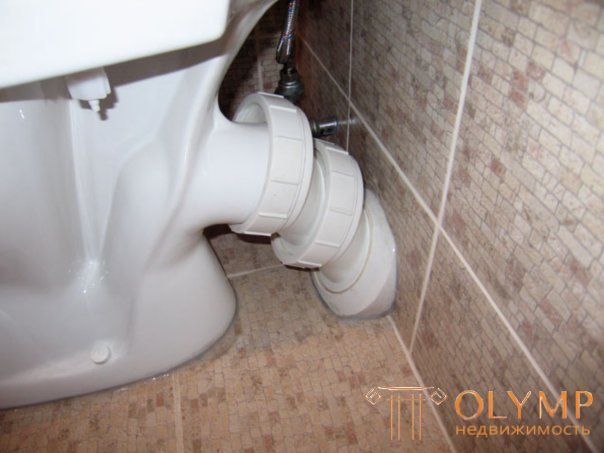 Sample toilet pipe pipe
Sample toilet pipe pipe
In the case of the construction of buildings with less than two floors, the existing construction standards allow that obsolete cast-iron or actual plastic waste pipes are not used today when installing sewage systems due to the small volume of wastewater.
Let's give an example:
Useful: in the case of private houses, the maximum value of a one-time flow is reached at the moments of flushing the toilet and bath.
Important: if there are several toilets in the house and their simultaneous use, the picture may significantly change and the size of the wastewater may be completely different.
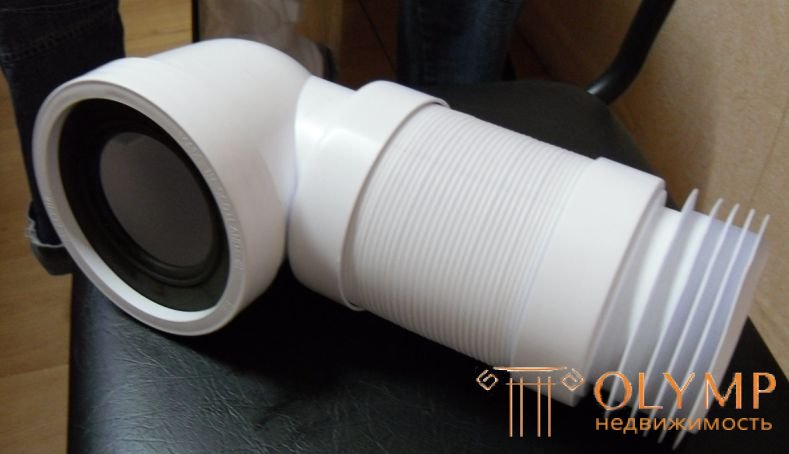 Example of a fan pipe
Example of a fan pipe
Pipe for toilet bowl is an indispensable element of ventilation in the following cases:
 Cast Iron Pipe
Cast Iron Pipe
Knowing what a fun pipe is and performing its installation, it is important to follow two basic rules:
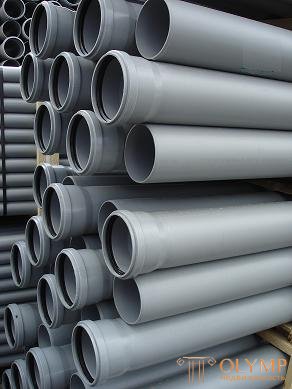 Plastic pipes
Plastic pipes
Sewage pipes are usually made of sewage pipes of the appropriate diameter. They constitute a continuation of the sewer riser and end with an input into a channel designed specifically for ventilation of the sewage system.
It is important: in some cases, for example - an insufficient number of ventilation channels), fan pipes are led out horizontally through the wall.
Connecting the fan pipe also allows you to solve such a problem as the appearance of an unpleasant odor in the bathroom during normal operation of the sewage system and high-quality ventilation.
This is due to the small size of the siphons of modern sanpiborov and ladders, in connection with which they form too little water trap - a supply of water. If the sanitary device or the shower drain is not used for several days, this leads to drying of the water seal and unobstructed penetration of sewage air into the bathroom.
At the same time, a pipe made of pig iron or plastic not only draws air, but also ventilates the sewer pipeline. When ascending to the atmosphere through the warm air riser, a small vacuum is created, due to which air does not penetrate into the bathroom, and air partially escapes from the bathroom through the dried siphon. That is why the installation of a funnel in a country house makes the smell when drying the siphon much less saturated.
According to building codes, the fan pipe should be held in a warm room or the pipe should be insulated, because if the fan pipe freezes, then evaporation starts to dissipate insufficiently efficiently and in the first year of operation the upper part of the fan pipe is covered with greenish sticky coating.
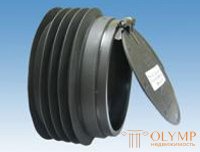
Non return valve for fun pipes
In case of sewage clogging, while the owner is thinking how to clear the clog, the accumulated feces can return to the house.
In order to avoid such a situation, a check valve must be installed on the funnel pipe:
The service life of the check valve reaches several decades. Installation instructions
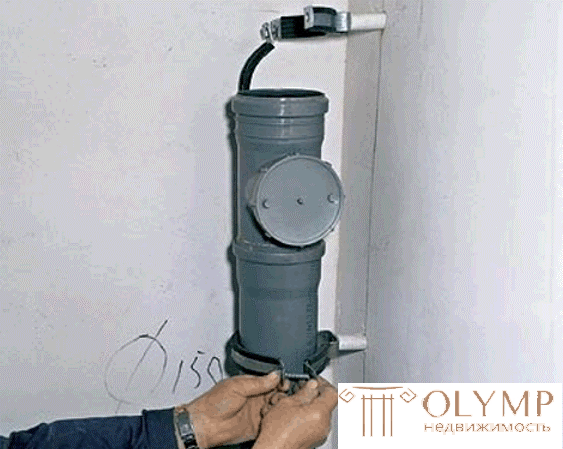
Installation of the fun pipe
Having figured out what the pipe of a fan is for, you should take a closer look at the main stages of its installation:
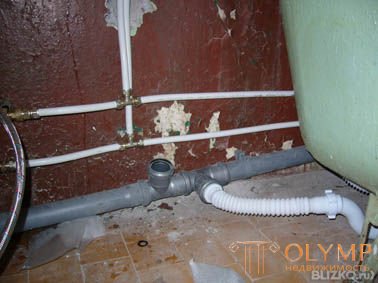 Dismantling the old pipe
Dismantling the old pipe
Important: before replacing, you should consult with experts to clarify whether the replacement of a part of the cast iron pipe to plastic will entail unpleasant consequences in the form of a decrease in the strength of the entire sewer system.

Mounting scheme
Important: silicone is better than soap; it seals the joint, but it requires more force when dismantling.
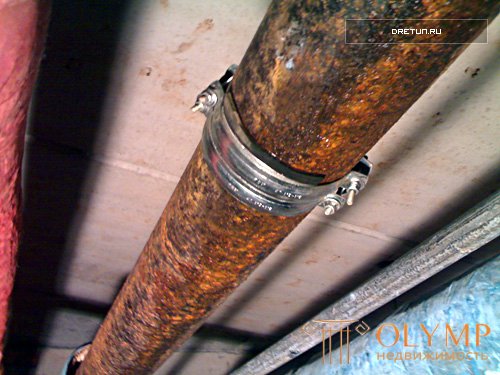 Metal hose clamps
Metal hose clamps
Important: more easy to use assembly foam will not allow in the case of dismantling to assemble the structure back, which is not critical for an uncomplicated sewage system in a country house.
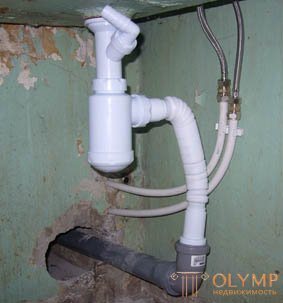 Replacement of sewer pipes
Replacement of sewer pipes
When repairing a funnel pipe, the following nuances should be considered:
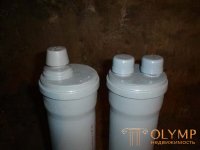
Vacuum valves
The fan pipe is repaired by direct connection to a single sewer riser, while on the remaining risers vacuum valves are installed, which are rubber seals equipped with springs. A working sewage system creates a vacuum in such a valve, as a result of which it opens by sucking air from a room into itself. After equalizing the pressure in the riser, the spring locks the valve, preventing unpleasant odor from escaping.
After reading this article, you should understand what a funnel pipe is like that prevents unpleasant odors from entering the bathroom, and from there to other rooms. Moreover, it is important not only to install a funnel pipe, but it is advisable to replace the existing cast iron pipe with a plastic one that has greater smoothness from the inside, which does not allow deposits to stick to the inside of the pipe cavity, clogging it up. In addition, the use of plastic pipes significantly simplifies the process of repair in the bathroom when replacing pipes in the bathroom and toilet.
Что бы оставить комментарий войдите
Комментарии (0)